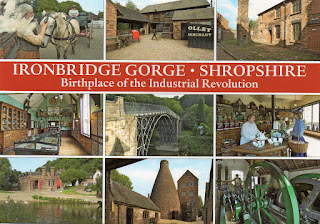The Dorset and East Devon Coast is an important fossil site that covers the Triassic, Jurassic and Cretaceous periods
 |
| Durdle Door, Dorset |
This postcard was sent by Lucy
Durdle Door (sometimes written Durdle Dor) is a natural limestone arch on the Jurassic Coast near Lulworth in Dorset, England.
The form of the coastline around Durdle Door is controlled by its geology—both by the contrasting hardnesses of the rocks, and by the local patterns of faults and folds. The arch has formed on a concordant coastline where bands of rock run parallel to the shoreline. The rock strata are almost vertical, and the bands of rock are quite narrow. Originally a band of resistant Portland limestone ran along the shore, the same band that appears one mile along the coast forming the narrow entrance to Lulworth Cove. Behind this is a 120-metre (390 ft) band of weaker, easily eroded rocks, and behind this is a stronger and much thicker band of chalk, which forms the Purbeck Hills. These steeply dipping rocks are part of the geological structure known as the Lulworth crumple, itself part of a broader monocline (a kinked type of geological fold) produced by the building of the Alps during the mid-Cenozoic. in: wikipedia


























